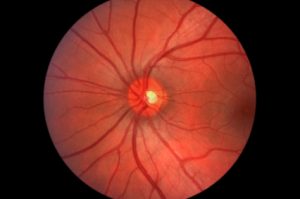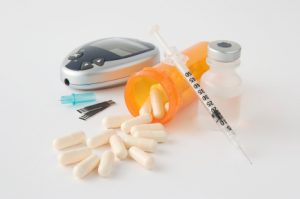How a diabetic Alert Dog can Help
How a Diabetic Alert Dog Can Help.
For insulin dependent diabetics, I think this is such a great idea! They are often known by the acronym ‘DAD’. They are a service dog, specially trained to warn their human companion when their blood sugar is too low or too high. They can also remind their diabetic friend to take their insulin at the right time.
This of course can be very useful in managing your diabetes. A diabetic service dog also can help to save lives by preventing permanent health damage due to
- seizures,
- passing out, and
- brain damage.
Diabetic Alert Dogs – smell great!
Pardon the pun, but in fact the canine nose has more than two hundred million scent receptors compared to a measly 5 million scent receptors in humans. Moreover, a large portion of a dog’s brain is devoted to processing olfactory (sensory) information. This makes a dog’s nose far superior to that of a human!
Dogs can smell things that humans simply cannot smell. The training they receive to become a diabetic alert dog teaches them how to hone in on specific scents associated with high and low blood sugar.
When a person’s blood sugar rises too high, they produce ketones that can be easily detected by a trained canine nose, while the human nose smells nothing different. When a person’s blood sugar drops too low, they produce excess nitrogen in the form of urea that escapes through the skin pores.
This can be easily detected by a trained canine nose but not a human’s nose.
Common Breeds of Diabetic alert Dog
The most common types of dogs that become service dogs for diabetics are
- poodles,
- labrador retrievers, and
- golden retrievers.
These breeds are chosen because they usually have a good temperament, an extremely good sense of smell, and can be trained more easily than most other breeds.
How old you ask? is a Diabetic Alert Dog
A fully trained diabetic alert dog is usually one to two years old when they are paired with their diabetic friend. Sometimes these service dogs are also trained to alert a family member when their companion’s blood sugar goes too high or too low. This can be especially helpful with smaller children.
Sleeping can be a dangerous time for an insulin dependent diabetic because a sleeping person is unaware of their own symptoms of low blood sugar and high blood sugar. An alert dog can be a real safety net, especially for a young child. They are taught how to wake their companion up and signal to them if their blood sugar becomes too high or too low during the night. This is particularly important for sound sleepers who have extreme fluctuations in their blood sugar levels.
Driving is another potential danger for diabetics since blood sugar irregularities can cause black outs and sleepiness while driving. In extreme cases, some diabetics are advised to not drive because it can be too risky.
This can become quite frustrating, even just when driving to work, school, or just performing basic everyday life tasks, such as shopping for instance. However, having a diabetic therapy dog riding along with you can give you back your freedom!
Kids with diabetes are notoriously forgetful and or resistant to testing their blood sugar. I think the practice of adding friendly reminders to cell phones and social media services is a brilliant idea – but a lot of the time (like my good friends daughter) even with these kid friendly technologies, kids just don’t like to test! However, giving them a lovable playmate at the same time –allows kids to take a little of the seriousness out of their situation. Takes the focus off the fact that they may well be chronically ill.
Training for a diabetic alert dog.
Part of the training they receive is obedience training so they can fit into a normal household without causing any additional stress. In fact, a diabetic alert dog has a calming effect and help to reduce anxiety in their diabetic companions. This is a significant advantage of having a DAD that is a sometimes overlooked. These dogs help their diabetic companions cope with the day to day stresses of living with diabetes. Since these dogs are service animals, they can go almost anywhere with their companions.
If you need more info or wish to find out about getting a diabetic alert dog, please checkout diabetic alert dogs.



 1. Mild non-proliferative retinopathy: This is the earliest stage that occurs when diabetes affects the circulatory system of the retina thus weakening the walls of retinal capillaries forming microaneurysms. Microaneurysms are small outpunches of the small blood vessels which can leak blood and fluid leading to edema and swelling in the retina which result in small dot-like hemorrhages.
1. Mild non-proliferative retinopathy: This is the earliest stage that occurs when diabetes affects the circulatory system of the retina thus weakening the walls of retinal capillaries forming microaneurysms. Microaneurysms are small outpunches of the small blood vessels which can leak blood and fluid leading to edema and swelling in the retina which result in small dot-like hemorrhages.


